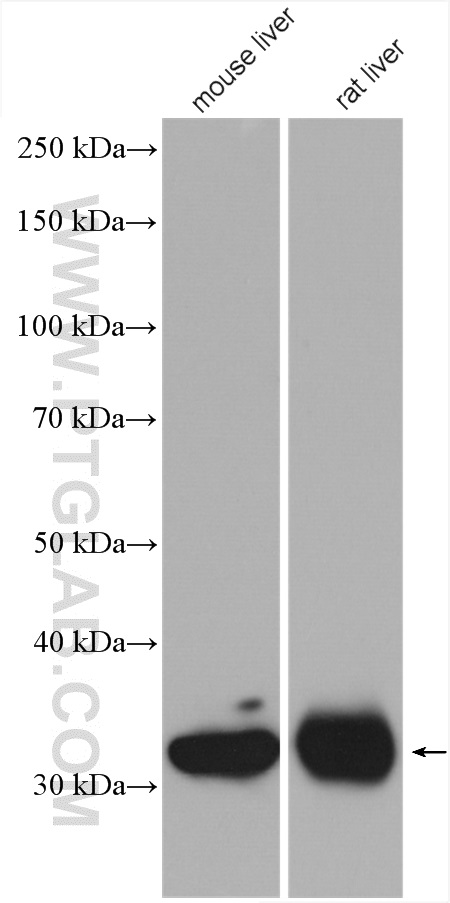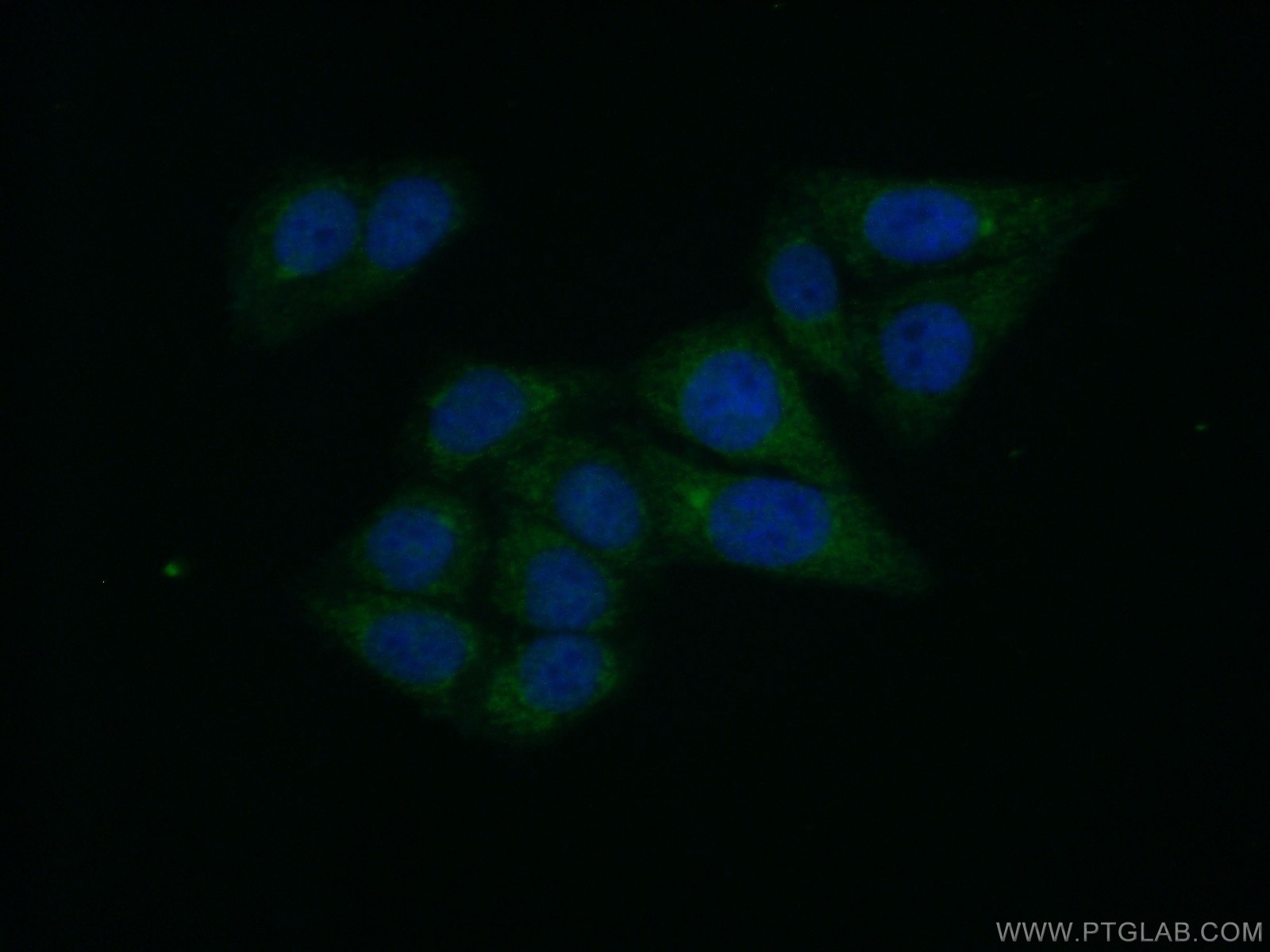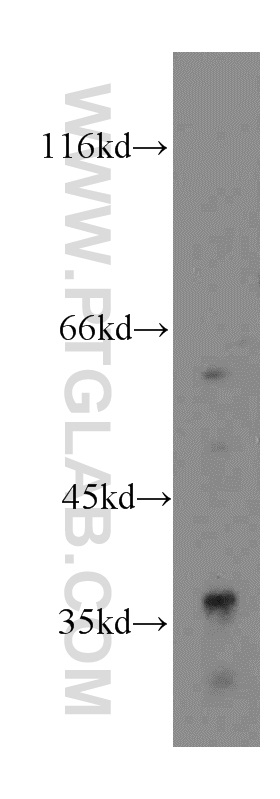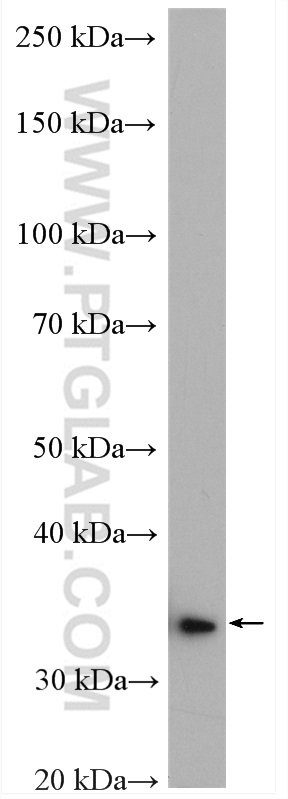验证数据展示
经过测试的应用
| Positive WB detected in | mouse liver tissue, HepG2 cells, mouse heart tissue, rat liver tissue |
| Positive IF/ICC detected in | HepG2 cells |
推荐稀释比
| 应用 | 推荐稀释比 |
|---|---|
| Western Blot (WB) | WB : 1:500-1:3000 |
| Immunofluorescence (IF)/ICC | IF/ICC : 1:20-1:200 |
| It is recommended that this reagent should be titrated in each testing system to obtain optimal results. | |
| Sample-dependent, Check data in validation data gallery. | |
产品信息
13451-1-AP targets GPD1 in WB, IHC, IF/ICC, ELISA applications and shows reactivity with human, mouse, rat samples.
| 经测试应用 | WB, IF/ICC, ELISA Application Description |
| 文献引用应用 | WB, IHC, IF |
| 经测试反应性 | human, mouse, rat |
| 文献引用反应性 | human, mouse, rat |
| 免疫原 | GPD1 fusion protein Ag4278 种属同源性预测 |
| 宿主/亚型 | Rabbit / IgG |
| 抗体类别 | Polyclonal |
| 产品类型 | Antibody |
| 全称 | glycerol-3-phosphate dehydrogenase 1 (soluble) |
| 别名 | GPDC, GPD C, GPD 1, Glycerol-3-phosphate dehydrogenase [NAD(+)], cytoplasmic, EC:1.1.1.8 |
| 计算分子量 | 349 aa, 38 kDa |
| 观测分子量 | 32-42 kDa |
| GenBank蛋白编号 | BC032234 |
| 基因名称 | GPD1 |
| Gene ID (NCBI) | 2819 |
| RRID | AB_10646471 |
| 偶联类型 | Unconjugated |
| 形式 | Liquid |
| 纯化方式 | Antigen affinity purification |
| UNIPROT ID | P21695 |
| 储存缓冲液 | PBS with 0.02% sodium azide and 50% glycerol , pH 7.3 |
| 储存条件 | Store at -20°C. Stable for one year after shipment. Aliquoting is unnecessary for -20oC storage. |
背景介绍
GPD1 (Glycerol-3-phosphate dehydrogenase 1) is an important enzyme belonging to the NAD-dependent glycerol-3-phosphate dehydrogenase family. Its C-terminal structural domain contains multiple helical structures for binding the substrate DHAP, and its N-terminal structural domain contains a β-folded core for binding NADH. GPD1 catalyzes the conversion of dihydroxyacetone phosphate (DHAP) and reduced nicotinamide adenine dinucleotide (NADH) to glycerol-3-phosphate (G3P) and NAD+, and plays a key role in carbohydrate and lipid metabolism. GPD1 also works with mitochondrial glycerol-3-phosphate dehydrogenase to form a glycerophosphate shuttle system that facilitates the transfer of reducing equivalents from the cytoplasm to the mitochondria. Abnormal activity of GPD1 has been associated with a variety of metabolic disorders, such as obesity, hypertriglyceridemia, and GPD1 has been implicated in cancer, potentially acting as a tumor suppressor.
实验方案
| Product Specific Protocols | |
|---|---|
| WB protocol for GPD1 antibody 13451-1-AP | Download protocol |
| IF protocol for GPD1 antibody 13451-1-AP | Download protocol |
| Standard Protocols | |
|---|---|
| Click here to view our Standard Protocols |
发表文章
| Species | Application | Title |
|---|---|---|
J Hematol Oncol Allosteric activation of the metabolic enzyme GPD1 inhibits bladder cancer growth via the lysoPC-PAFR-TRPV2 axis. | ||
Proc Natl Acad Sci U S A A ferroptosis defense mechanism mediated by glycerol-3-phosphate dehydrogenase 2 in mitochondria. | ||
J Ethnopharmacol Si-Ni-San promotes liver regeneration by maintaining hepatic oxidative equilibrium and glucose/lipid metabolism homeostasis | ||
Mol Biol Rep Glucose enhances catecholamine-stimulated lipolysis via increased glycerol-3-phosphate synthesis in 3T3-L1 adipocytes and rat adipose tissue. | ||
Int J Biol Macromol Genistein and metformin regulate glycerol kinase and the enzymes of glycerol 3-phosphate shuttle in a differential manner in myocytes, hepatocytes and adipocytes | ||
Phytomedicine Astragaloside IV and cycloastragenol promote liver regeneration through regulation of hepatic oxidative homeostasis and glucose/lipid metabolism |



